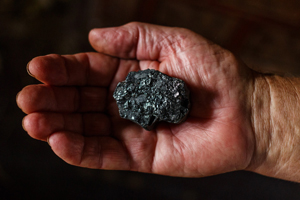
Coal, the most abundant and reliable energy resource, will continue to be the dominant energy source in power generation to meet the fast-growing electricity demand in the emerging economies of the Association of Southeast Asian Nations (ASEAN). The share of coal use in power generation was 32% in 2015, and this is projected to increase to 42% by 2040. In contrast, the share of gas in power generation was 42% in 2015 but is projected to drop to 37% by 2040 (Kimura and Han, 2016). The increasing use of coal for power generation in ASEAN countries will lead to the widespread construction of coal-fired power plants, which, without the use of the best available clean-coal technology (CCT), will result in increased greenhouse gas and carbon dioxide emissions. The seemingly relaxed approach to global emissions taken by the United States government led by Donald Trump may have the unintended effect of encouraging the widespread construction of less-efficient coal-fired power plants in power-hungry emerging ASEAN and the rest of the Asian economies. Policy approaches must be reviewed, therefore, so that emerging Asia can afford CCTs and to allow for more sustainable green growth across ASEAN and emerging Asia.
The dissemination of CCTs for the clean and efficient use of coal in the East Asia Summit region is of pressing importance. A study conducted by the Economic Research Institute for ASEAN and East Asia on the strategic use of coal in the region concluded that the application of inefficient technologies and ineffective environmental standards and regulations would lead to a waste of valuable coal resources (Otaka and Han, 2016). The study examined various technologies (ultra-supercritical [USC], supercritical, and subcritical boiler types), comparing their thermal efficiencies, investment costs, maintenance costs, fuel consumption, and carbon dioxide emissions. It found that the use of highly efficient technologies, such as USC, would provide better economic returns in any coal price scenario ($60/ton, $80/ton, and $100/ton) and that the electricity produced by USC plants was more affordable than the electricity produced with supercritical or other conventional technologies.
Although USC technology is one of the best options for raising plant efficiency and reducing carbon dioxide and local pollution, such as nitrogen oxides and sulfur oxides, many developing Asian countries still cannot afford the technology because the upfront investment costs are higher than those of supercritical and conventional technologies. For example, some Southeast Asian countries have just recently started to use coal-fired power plants, but plant efficiency is only about 32%, very low compared with USC, which could raise plant efficiency to 45%. In emerging ASEAN, additional capacity through coal-fired generation is likely to be built using this type of low-efficiency or subcritical plant.
This raises the question: How do we help developing Asia afford the CCTs that it urgently needs? The construction of plants with conventional or subcritical technology will become common in emerging countries in ASEAN, such as Myanmar, the Lao People’s Democratic Republic, and Cambodia, if they are unable to access USC technologies or the support from developed countries is insufficient. Hence, possible mechanisms to support the deployment of CCTs need to be explored.
CCTs, such as USC technology, involve larger capital investment than supercritical or subcritical technologies. The higher upfront costs of CCTs have been an issue for developers and investors. Lower costs are needed, and these can be achieved through policy framework, such as attractive finance/loan schemes for USC power plants or through strong political institutions that can provide public financing for CCTs for emerging Asia; and international cooperation framework to ensure the deployment of CCTs, which are crucially important for abating greenhouse gas emissions. Failure to reduce these costs will mean falling public financial support for CCTs in emerging Asia and result in the region using non-Organisation for Economic Co-operation and Development financing or other forms of financial support, thus leading to the increased use of low-efficiency power plants.
Some countries in ASEAN, particularly Thailand, have been embarking on CCTs by retiring their old conventional coal power plants and replacing them with USC coal power plants. However, in Thailand, the government has faced huge protests from some communities that are against coal-fired power plants due to prior experiences of their negative effects. Thus, seeking public acceptance on the cleaner use of coal through CCTs will be crucial. People are skeptical of the new technologies as they associate any use of coal with strong pollution. Experiences in developed nations, such as Japan, could provide good examples for achieving public consensus on coal use by showing that CCTs uses coal more efficiently, that they are much cleaner than conventional plants, and that the emissions of plants using CCT are very close to those of gas-fired power plants.
Finally, community participation is essential. The public should demand that local authorities choose technologies that are environmentally friendly and sustainable for their communities. In many cases, a lack of public participation may lead to local pollution reaching unacceptable limits and harming communities. Local participation will only be meaningful when local people are well informed about the potential impacts of the technologies chosen. But institutions in emerging Asia may not pay much attention to such participation. Active organizations are needed, therefore, to increase awareness about the harm that can be caused by less-efficient coal-fired power plants.
_____
References:
Kimura, S., and P. Han. 2016. Energy Outlook and Energy Saving Potential in East Asia 2016. Jakarta: Economic Research Institute for ASEAN and East Asia.
Otaka, Y., and P. Han. 2016. Study on the Strategic Usage of Coal in the EAS Region: A Technical Potential Map and Update of the First-Year Study. Jakarta: Economic Research Institute for ASEAN and East Asia.







Comments are closed.